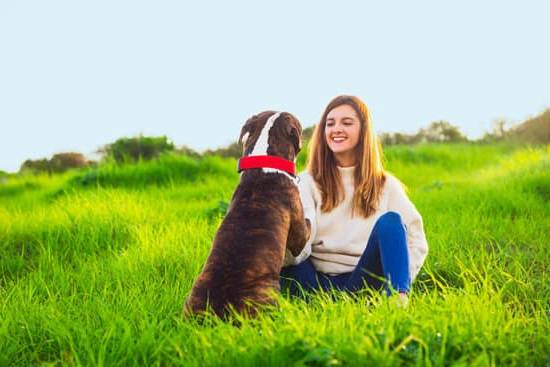Is your old dog struggling to go outside? It can be a challenge to train an older dog to do their business outdoors, but with the right approach and understanding of their limitations, it is possible.
This article will provide you with practical tips and strategies to help you train your senior pup to go outside. From assessing physical limitations to addressing fear or anxiety, we’ll cover everything you need to know to make the training process smoother for both you and your furry friend.
As dogs age, they may experience physical limitations that make it harder for them to go outside as they used to. Understanding these challenges is crucial in order to create a training plan that is effective and considerate of your old dog’s needs. In this article, we will explore how you can assess your old dog’s physical limitations and adjust your training routine accordingly.
Consistency is key when it comes to training dogs of any age, and this is especially true for older dogs. We will discuss the importance of establishing a consistent outdoor routine for your old dog and how this can help reinforce positive outdoor behavior. Additionally, we’ll delve into the use of positive reinforcement as a tool for encouraging good habits, as well as addressing any fear or anxiety your old dog may have about going outside.
Assessing the Physical Limitations of an Older Dog
As dogs age, they can develop physical limitations that may affect their ability to go outside and relieve themselves. It is important for dog owners to understand these challenges in order to effectively train their older dog to go outside.
Some common physical limitations in older dogs include arthritis, decreasing mobility, and issues with bladder control. These limitations may make it more difficult for them to signal when they need to go outside or to physically make it outdoors in time.
To address these physical limitations, it is essential for dog owners to be patient and understanding. Creating a consistent outdoor routine can help older dogs anticipate when they will be going outside and adjust their behavior accordingly. Additionally, providing easier access to the outdoors by using ramps or installing a pet door can facilitate the process of training an old dog to go outside.
In some cases, modifying the environment of the outdoor space may also be necessary. For example, if your old dog has trouble walking on certain types of surfaces such as slippery tiles or steep stairs, creating a designated area with suitable flooring and gentle inclines can make it easier for them to navigate and feel more comfortable going outside.
| Physical Limitations | Addressing Strategies |
|---|---|
| Arthritis | Using ramps or pet doors for easier access |
| Decreasing mobility | Creating a consistent outdoor routine and modifying the environment |
| Bladder control issues | Monitoring fluid intake and providing frequent bathroom breaks |
Creating a Consistent Outdoor Routine for Your Old Dog
As your dog gets older, their habits and routines may change, and this includes their bathroom habits. Creating a consistent outdoor routine for your old dog is essential in helping them understand when and where they should go outside. This can be particularly challenging if they have never been properly trained or if they are experiencing physical limitations due to their age.
One of the first steps in establishing a routine for an older dog is to assess their physical limitations. Older dogs may struggle with mobility issues such as arthritis or joint pain, which can make it difficult for them to go outside as frequently as they used to. Understanding and accommodating these limitations is crucial in creating a routine that works for both you and your furry friend.
Positive reinforcement is key when training an old dog to go outside. Using treats, praise, and rewards can help motivate your dog to engage in the desired behavior. It’s important to be patient and consistent with these rewards, as it may take some time for your old dog to adjust to the new routine.
It’s also important to address any fear or anxiety your old dog may have about going outside. This could be due to a number of factors such as past negative experiences, changes in their environment, or age-related anxiety. Taking the time to identify and address these concerns will be crucial in helping your old dog feel comfortable going outside again.
| Old Dog Outdoor Training Tips | Details |
|---|---|
| Assess Physical Limitations | Understand any mobility issues that may impact outdoor activity |
| Positive Reinforcement | Use treats, praise, and rewards consistently during training |
| Address Fear/Anxiety | Determine any fears or anxieties your old dog has about going outside and take steps to alleviate them |
How to Use Positive Reinforcement to Encourage Outdoor Behavior
As your old dog adjusts to new outdoor habits, positive reinforcement can be a powerful tool in encouraging and maintaining the behavior you want. Positive reinforcement involves rewarding good behavior rather than punishing bad behavior, which is especially important when training an older dog.
Choose the Right Rewards
When using positive reinforcement for outdoor training, it’s essential to find the right rewards that motivate your old dog. This could include their favorite treats, verbal praise, or extra playtime. Experiment with different options to see what resonates with your furry friend the most.
Timing Is Key
To effectively use positive reinforcement, timing is crucial. When your old dog goes outside and does their business, immediately reward them with their chosen incentive. This helps them understand that going outdoors is the desired behavior and increases the likelihood of them doing it again in the future.
Consistency and Patience
Consistency is key when using positive reinforcement to encourage outdoor behavior in an older dog. Be patient and persistent in providing rewards every time they display the desired behavior of going outside. Over time, this will help reinforce the habit and make it a natural part of their routine.
Using positive reinforcement to encourage outdoor behavior in an old dog may take time and effort, but with patience and consistency, you can help your furry companion successfully transition to a healthier routine. Remember that every dog is unique, so what works for one may not work for another – don’t be afraid to adapt your approach as needed.
Addressing Any Fear or Anxiety Your Old Dog May Have About Going Outside
As dogs age, they may develop fear or anxiety about going outside due to factors such as physical discomfort, changes in their environment, or previous negative experiences. It’s essential to address these concerns in order to successfully train an old dog to go outside.
To help your old dog overcome fear or anxiety about going outside, consider the following tips:
- Observe your dog’s behavior: Pay attention to any signs of fear or anxiety when it comes to going outside. This could include reluctance to approach the door, trembling, excessive panting, or attempting to hide.
- Identify triggers: Try to determine what specific aspects of going outside are causing distress for your dog. It could be unfamiliar sounds, new surroundings, other animals, or simply the act of walking on a leash.
- Gradual exposure: Introduce your old dog to the outdoor environment slowly and in a controlled manner. Start by spending short periods of time in a familiar and safe outdoor space, then gradually increase the duration and introduce new elements as your dog becomes more comfortable.
By addressing any fear or anxiety your old dog may have about going outside with patience and understanding, you can help them become more at ease with outdoor activities and set them up for successful training.
Remember that every old dog is different, and it may take time and effort to help them overcome their fears. Be patient and persistent in providing reassurance and positive experiences during outdoor training sessions. If you are struggling with making progress in this area, don’t hesitate to seek professional help from a veterinarian or animal behaviorist experienced in working with older dogs.
Tips for Teaching an Old Dog New Outdoor Habits
As a dog ages, their ability to learn new habits may decline, making it more challenging to train them to go outside. However, with the right approach and plenty of patience, it is possible to teach an old dog new outdoor habits.
Understanding Your Old Dog’s Limitations
Before beginning the training process, it’s important to assess your old dog’s physical limitations. Arthritis, vision or hearing loss, and other age-related issues can make it difficult for them to move around or respond to commands. Understanding these limitations will allow you to tailor your training approach to accommodate your dog’s needs.
Consistent Outdoor Routine
Older dogs thrive on routine, so creating a consistent schedule for outdoor trips is essential. Take your dog outside at the same times every day, such as after meals or before bedtime. This will help them anticipate when they need to go outside and reduce accidents in the home.
Positive Reinforcement
Using positive reinforcement is crucial when training an old dog to go outside. Rewarding your dog with treats or praise when they successfully do their business outside will encourage them to repeat the behavior. Be patient and consistent with this method, as older dogs may take longer to learn and respond compared to younger counterparts.
By understanding your old dog’s limitations, creating a consistent routine, and using positive reinforcement, you can effectively train an old dog to go outside. While the process may take time and patience, the bond between you and your furry companion will grow stronger throughout the training journey.
Dealing With Accidents and Setbacks During the Training Process
Training an old dog to go outside can be a challenging and sometimes frustrating process, especially when accidents and setbacks occur. It’s important to remember that accidents are a normal part of the training process, and it’s essential to approach them with patience and understanding.
When accidents happen, it’s crucial not to scold or punish your old dog. This can create a negative association with going outside and worsen their anxiety or fear. Instead, clean up the accident calmly and without making a big fuss about it.
Then, take note of the circumstances surrounding the accident – for example, did it occur at a certain time of day or in a particular location? Understanding these patterns can help you adjust your outdoor routine and anticipate when your dog may need to go outside.
Setbacks are also common during the training process. Your old dog may have good days and bad days, just like humans do. If you notice that your dog is regressing in their outdoor behavior, it may be helpful to revisit the basics of training by reinforcing positive behavior with treats and praise. Additionally, consider if there have been any changes in their environment or routine that could be causing stress or confusion.
Remember that training an old dog to go outside takes time and persistence. Stay consistent with your outdoor routine and continue using positive reinforcement to encourage desired behavior.
Don’t be discouraged by setbacks – with patience and dedication, your old dog can learn new habits and become more comfortable going outside. If you find that you’re struggling to make progress despite your best efforts, don’t hesitate to seek professional help for additional guidance on how to train an old dog to go outside.
The Importance of Patience and Persistence When Training an Old Dog to Go Outside
As pet owners, we understand the challenges that come with training an old dog to go outside. Whether your furry friend is dealing with physical limitations, fear, anxiety, or simply a stubborn nature, it’s important to approach this process with patience and persistence. Here are some tips on how to train an old dog to go outside:
- Understand the physical limitations of your older dog: Before beginning the training process, it’s essential to assess any physical limitations that may affect your dog’s ability to go outside. This could include arthritis, mobility issues, or other health conditions. Once you understand these limitations, you can make adjustments to your outdoor routine and environment to accommodate your dog’s needs.
- Create a consistent outdoor routine for your old dog: Older dogs thrive on routine, so it’s essential to establish a consistent schedule for outdoor activities. This could include designated times for bathroom breaks, walks, or playtime in the yard.
- Use positive reinforcement to encourage outdoor behavior: Positive reinforcement is key when training an old dog to go outside. Rewarding your furry friend with treats, praise, or playtime when they exhibit desired outdoor behavior will encourage them to continue this behavior in the future.
- Address any fear or anxiety your old dog may have about going outside: Some older dogs may develop fear or anxiety about going outside due to past negative experiences or changes in their environment. It’s important to address these feelings with patience and compassion, using desensitization techniques and positive reinforcement to help them overcome their fears.
- Be patient and persistent: Above all else, the key to successfully training an old dog to go outside is patience and persistence. Understand that this process may take time and that setbacks are normal. Stay consistent in your approach and continue working with your pet every day until they feel comfortable and confident outdoors.
By approaching the training process with understanding and empathy while maintaining consistency, you can help your older dog develop new outdoor habits while strengthening the bond between you both.
Seeking Professional Help if Necessary for Training an Old Dog to Go Outside
As we have seen, training an old dog to go outside comes with its own unique set of challenges. From understanding their physical limitations to addressing any fear or anxiety they may have, it can be a complex process. However, with patience and persistence, it is possible to teach an old dog new outdoor habits.
It is important to remember that every dog is different and may require different approaches to training. If you find yourself struggling to make progress with your old dog, seeking professional help can be the best course of action. A professional dog trainer will have the expertise and experience to assess your dog’s specific needs and create a customized training plan that works for them.
In conclusion, while training an old dog to go outside may seem daunting at first, it is certainly achievable with the right approach and mindset. By understanding their limitations, creating a consistent routine, using positive reinforcement, and addressing any fears or anxieties, you can make the process smoother for your furry friend.
And remember, there’s no shame in seeking help from a professional if needed. With patience and dedication, you can successfully train your old dog to enjoy the great outdoors once again.
Frequently Asked Questions
Can an Older Dog Still Be Potty Trained?
Yes, older dogs can still be potty trained, although it may require more patience and consistency. It’s important to understand their physical limitations and adjust the training methods accordingly.
Can You Train an Old Dog Not to Pee in the House?
It is possible to train an old dog not to pee in the house by using positive reinforcement, establishing a routine, and closely monitoring their behavior. Consistency and understanding the underlying reasons for their accidents are key.
Why Is My Senior Dog Not Asking to Go Outside?
There are several reasons why a senior dog may not be asking to go outside. These can include medical issues such as urinary incontinence or cognitive decline, discomfort due to arthritis or other age-related conditions, or simply a change in their routine or environment. Understanding the specific cause is crucial in addressing this behavior.

Welcome to the blog! I am a professional dog trainer and have been working with dogs for many years. In this blog, I will be discussing various topics related to dog training, including tips, tricks, and advice. I hope you find this information helpful and informative. Thanks for reading!





